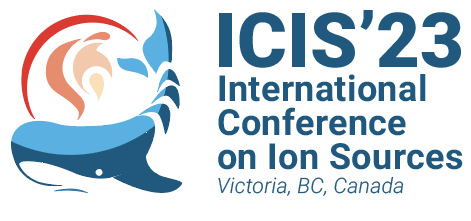Speaker
Description
The negative ion sources currently used for Fusion applications produce tens of Amperes of Hydrogen or Deuterium ion current from a low-temperature (few eV) plasma. Being the negative ion current typically limited below 200 - 300 A/m2 at the extraction apertures, these sources can be quite large and their input power ranges from some tens to hundreds of kW. Two source types are currently used: the Japanese "kamaboko" sources, and the radio-frequency (RF) plasma-driver sources, mainly developed in EU. The former exploits an arc discharge produced by hot filaments biased w.r.t. the containing chamber, whereas the latter uses cylindrical coils operating at about 1-2 MHz. The generated plasma expands towards a cesiated Plasma Grid (PG), where some of the impinging particles are converted into negative ions and then accelerated through the grid apertures. In both types a power of about 2-4 MW/m2 is necessary for achieving the required negative ion current.
The main reasons for this are: (1) the low-temperature plasma is confined just by the cusp-shaped magnetic field produced by permanent magnets located outside the plasma chamber; (2) a large fraction of the electric power of the RF coils is dissipated by eddy currents induced on the surrounding metallic structures.
In principle, a current-free plasma (such as the one considered in these sources) could be confined using a purely poloidal magnetic field configuration. In fact, a dipole configuration allows to achieve an efficient plasma confinement, without requiring a net plasma current. This concept has already been applied in the LDX device [Garnier et al., Nucl. Fusion 49 (2009) 055023] and a similar configuration has been proposed for the Polomac device [F. Elio, Fusion Engineering and Design 89 (2014)].
In the paper we propose a novel Ion source, based on the Polomac configuration, estimate the particle trajectories so as to assess the equilibrium and low-temperature plasma confinement capabilities of such device.
| Email Address | giuseppe.chitarin@igi.cnr.it |
|---|---|
| I have read the Code of Conduct to attend ICIS2023. | Yes |

